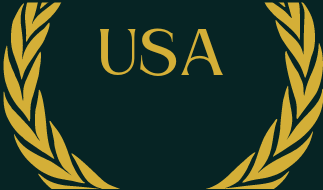Money
Money is the most basic need of life, without which one cannot fulfill the basic needs of his daily life. We can never compare the importance of money with the importance of love and care. When one needs money, it cannot be fulfilled by love and if one needs love, it cannot be fulfilled by money. Both are very much needed for a healthy life but, both have different importance in life.
Preface
In such a competitive society and world, none of us can survive without money. We need money to fulfill our basic needs, such as buying food, and other basic necessities of life, which are absolutely impossible to get without money. In the society those people who are rich and who have wealth are considered to be respectable and respected person in the society however, a poor person is looked upon with hatred without any good feeling.
Types of Currency
four different types of money
In economics, money is defined as a generally accepted medium of exchange for goods and services. Virtually anything can be considered money, as long as it performs what we call the three major functions of money (e.g., medium of exchange, store of value, unit of account). With this in mind, it is not surprising that there were different types of money throughout history. To give you a brief overview, we’re going to take a look at the four most relevant ones below: commodity money, fiat money, fiduciary money, and commercial bank money.
currency type
1 Commodity Money
Commodity money is the simplest, and most likely, the oldest type of money. It constitutes scarce natural resources that act as a medium of exchange, store of value and unit of account. Barter is closely related to goods and services, where goods and services are directly exchanged for other goods and services. Commodity money facilitates this process as it acts as a generally accepted medium of exchange. One thing to note about commodity money is that its value is defined by the intrinsic value of the commodity itself. In other words, the commodity itself becomes money. Examples of commodity money include gold coins, pearls, shells, spices, etc.
2 Fiat Money | fiat money
Fiat money gets its value from a government order (ie, FIT). That means, the government declares fiat money to be legal tender, which is required to be accepted by all the people and firms in the country as a means of payment. If they fail to do so, they can be fined or even imprisoned. Unlike commodity money, fiat money is not backed by any physical commodity. By definition, its intrinsic value is much less than its face value. Therefore, the value of fiat money is derived from the relationship between supply and demand. Most modern economies are based on the fiat money system. Examples of fiat money include coins and bills.
3 Fiduciary Money
Fiduciary money relies for its value on the belief that it will be generally accepted as a medium of exchange. Unlike fiat money, it is not declared legal tender by the government, which means that people are not required by law to accept it as a means of payment. Instead, the issuer promises to return the funds issued by the issuer in exchange for the item or FIAI money if requested by the issuer. As long as people are confident that this promise will not be broken, they can use fiduciary money like regular fiat or commodity money. Examples of fiduciary money include cheques, banknotes or drafts.
4 Commercial bank money
Commercial bank money can be described as claims against financial institutions that can be used to purchase goods or services. It represents the portion of a currency that is made up of loans generated by commercial banks. More specifically, commercial bank money is created through what we call fractional reserve banking. Fractional reserve banking describes a process where commercial banks lend more than the value of the actual currency they hold. Just to note at this point that in essence, commercial bank money is loans generated by commercial banks that can be exchanged for “real” money or to purchase goods and services.
